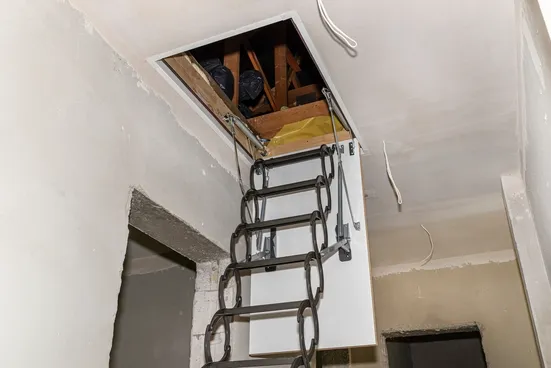Attic ladders in Australia provide a convenient and budget-friendly solution for accessing your attic space. But, improper installation can turn this handy addition into a safety hazard. To ensure a seamless and secure attic ladder installation, here’s a comprehensive guide with essential dos and don’ts to follow:
Dos
Measure Your Space: Before purchasing and fitting attic ladder, meticulously measure the ceiling opening and the floor-to-ceiling height. This ensures the ladder fits properly within your space, allowing for comfortable headroom when fully extended.
Consider Your Needs: Choose a ladder with a weight capacity that exceeds your anticipated needs. Factors like the amount of storage you plan to keep in the attic and the frequency of use should be considered. For example, a lightweight aluminium ladder might suffice for occasional access to a lightly used storage space. In contrast, a sturdier steel ladder might be necessary for a frequently accessed workshop attic.
Check Compatibility: Ensure the ladder is compatible with your roof type (e.g., truss or flat) and ceiling construction (e.g., plasterboard, concrete). Some attic spaces might have limited clearance or require modifications to the opening depending on the ladder design. Consulting the manufacturer’s specifications or a professional can help you choose the most suitable ladder for your unique situation.
Consult a Professional: If you’re unsure about your DIY skills or have a complex attic layout, consider consulting a qualified carpenter or handyman for installation. Attic spaces can sometimes have unexpected obstacles or require additional framing work to accommodate the ladder. A professional can evaluate your needs and ensure a safe and code-compliant installation.
Ensure Structural Integrity: Secure the ladder frame to the ceiling joists for optimal stability. Use the right fasteners recommended by the manufacturer for your specific ceiling material. Improperly secured ladders can become wobbly and pose a safety risk.
Check for Level: Utilise a level to ensure the ladder opening sits perfectly horizontal for smooth operation and safe climbing. A tilted ladder can be awkward and potentially dangerous to use.
Don’ts
Overload the Ladder: Never exceed the weight capacity of the ladder. This can lead to structural failure and serious injuries. The weight capacity is clearly marked on the ladder itself, so be sure to check it before using it to haul heavy items.
Modify the Ladder: Refrain from modifying the ladder structure in any way. This can compromise its safety and warranty. Attic ladders are designed and tested to meet specific safety standards; altering them can put you at risk.
Skip Safety Precautions: Always wear gloves and safety glasses during installation. The gloves protect your hands from cuts and scrapes, while the safety glasses shield your eyes from dust and debris.
Cut the Wrong Joists: Before cutting any ceiling joists to accommodate the ladder opening, ensure they are not structural supports. Consult a professional if unsure. Cutting into a load-bearing joist can compromise the structural integrity of your ceiling and roof.
Forget Insulation: If your attic is insulated, ensure proper insulation is maintained around the ladder opening to prevent heat loss. Consider using insulation batts or spray foam insulation to create a tight seal around the ladder opening.
Neglect Weatherproofing: Ensure proper weatherproofing measures are taken to prevent leaks and moisture buildup for exterior access hatches. This may involve applying flashing and sealant around the opening to create a watertight barrier.
Wrap Up
By following the above-mentioned dos and don’ts, you can ensure a safe and successful attic ladder installation. Remember, a properly installed ladder will provide convenient access to your attic space for years to come. If you’re unsure about any aspect of the installation process, do not hesitate to seek professional help for peace of mind and a job well done. Check out Attic Ladders and Floors for more information.
